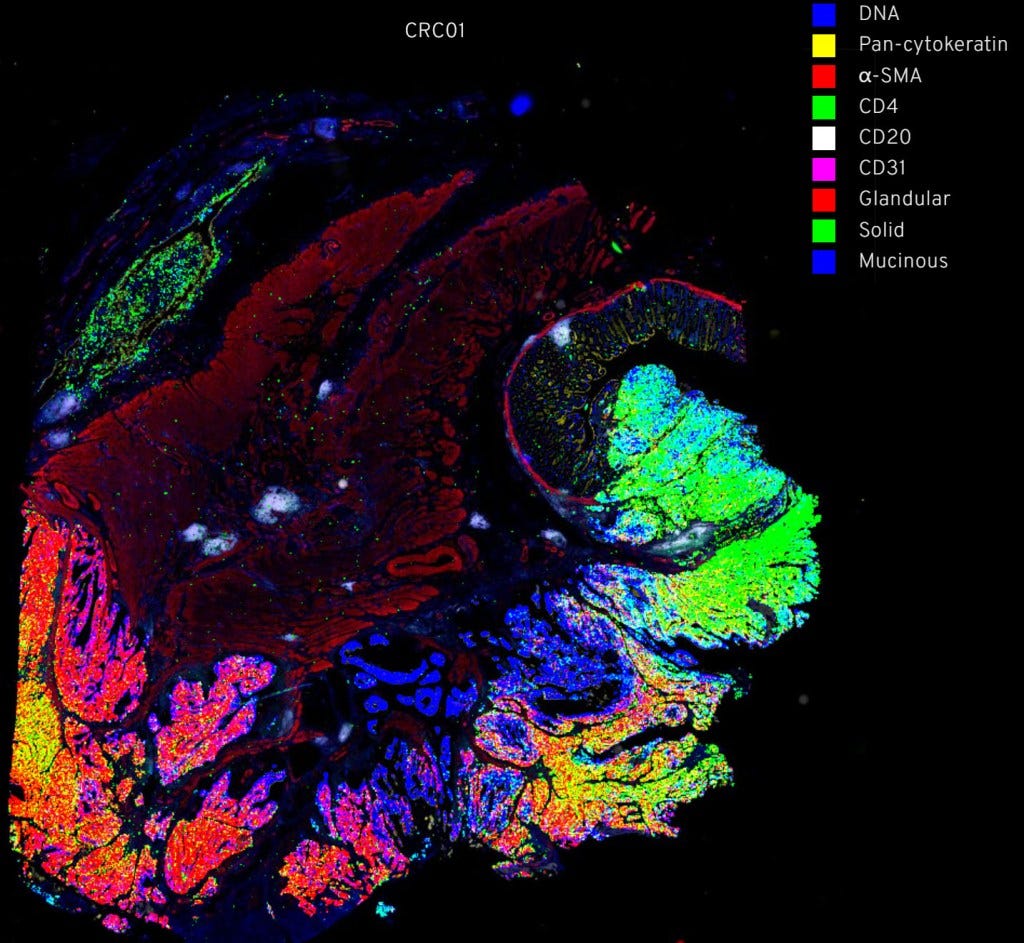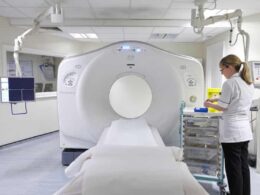institute for health transformation
Joaquim Cardoso MSc
Founder and Chief Researcher & Editor
January 31, 2023
SOURCE:
National Institutes of Health
Lawrence Tabak, D.D.S., Ph.D.
January 31st, 2023
This year, too many Americans will go to the doctor for tissue biopsies to find out if they have cancer.
Highly trained pathologists will examine the biopsies under a microscope for unusual cells that show the telltale physical features of a suspected cancer.
As informative as the pathology will be for considering the road ahead, it would be even more helpful if pathologists had the tools to look widely inside cells for the actual molecules giving rise to the tumor.
As informative as the pathology will be for considering the road ahead, it would be even more helpful …if pathologists had the tools to look widely inside cells for the actual molecules giving rise to the tumor.
Working this “molecular information” into the pathology report would bring greater diagnostic precision, drilling down to the actual biology driving the growth of the tumor.
It also would help doctors to match the right treatments to a patient’s tumor and not waste time on drugs that will be ineffective.

That’s why researchers have been busy building the needed tools and also mapping out molecular atlases of common cancers.
These atlases, really a series of 3D spatial maps detailing various biological features within the tumor, keep getting better all the time.
That includes the comprehensive atlas of colorectal cancer just published in the journal Cell [1].
This colorectal atlas comes from an NIH-supported team led by Sandro Santagata, Brigham and Women’s Hospital, Boston, and Peter Sorger, Harvard Medical School, Cambridge, MA, in collaboration with investigators at Vanderbilt University, Nashville, TN.
The colorectal atlas joins their previously published high-definition map of melanoma [2], and both are part of the Human Tumor Atlas Network that’s supported by NIH’s National Cancer Institute.
What’s so interesting with the colorectal atlas is the team combined traditional pathology with a sophisticated technique for imaging single cells, enabling them to capture their fine molecular details in an unprecedented way.
What’s so interesting with the colorectal atlas is the team combined traditional pathology with a sophisticated technique for imaging single cells, enabling them to capture their fine molecular details in an unprecedented way.
They did it using a cutting-edge technique known as cyclic immunofluorescence, or CyCIF.
In CyCIF, researchers use many rounds of highly detailed molecular imaging on each tissue sample to generate a rich collection of molecular-level data, cell by cell.
Altogether, the researchers captured this fine-scale visual information for nearly 100 million cancer cells isolated from tumor samples representing 93 individuals diagnosed with colorectal cancer.
With this single-cell information in hand, they next created detailed 2D maps covering the length and breadth of large portions of the colorectal cancers under study.
Finally, with the aid of first author Jia-Ren Lin, also at Harvard Medical School, and colleagues they stitched together their 2D maps to produce detailed 3D reconstructions showing the length, breadth, and height of the tumors.
This more detailed view of colorectal cancer has allowed the team to explore differences between normal and tumor tissues, as well as variations within an individual tumor.
In fact, they’ve uncovered physical features that had never been discovered.
This more detailed view of colorectal cancer has allowed the team to explore differences between normal and tumor tissues, as well as variations within an individual tumor.
In fact, they’ve uncovered physical features that had never been discovered.
For instance, an individual tumor has regions populated with malignant cells, while other areas look less affected by the cancer.
In between are transitional areas that correspond to molecular gradients of information.
With this high-resolution map as their guide, researchers can now study what this all might mean for the diagnosis, treatment, and prognosis of colorectal cancer.

The atlas also shows that the presence of immune cells varies dramatically within a single tumor.
That’s an important discovery because of its potential implications for immunotherapies, in which treatments aim to unleash the immune system in the fight against cancer.
The maps also provide new insights into tumor structure.
For example, scientists had previously identified what they thought were 2D pools of a mucus-like substance called mucin with clusters of cancer cells suspended inside.
However, the new 3D reconstruction make clear that these aren’t simple mucin pools.
Rather, they are cross sections of larger intricate caverns of mucin interconnected by channels, into which cancer cells make finger-like projections.
The good news is the researchers already are helping to bring these methods into the cancer clinic.
They also hope to train other scientists to build their own cancer atlases and grow the collection even more.
- In the meantime, the team will refine its 3D tumor reconstructions by integrating new imaging technologies and even more data into their maps.
- It also will map many more colorectal cancer samples to capture the diversity of their basic biology.
- Also of note, having created atlases for melanoma and colorectal cancer, the team has plans to tackle breast and brain cancers next.
Let me close by saying, if you’re between the ages of 45 and 75, don’t forget to stay up to date on your colorectal cancer screenings.
These tests are very good, and they could save your life.
References:
[1] Multiplexed 3D atlas of state transitions and immune interaction in colorectal cancer. Lin JR, Wang S, Coy S, Chen YA, Yapp C, Tyler M, Nariya MK, Heiser CN, Lau KS, Santagata S, Sorger PK. Cell. 2023 Jan 19;186(2):363–381.e19.
[2] The spatial landscape of progression and immunoediting in primary melanoma at single-cell resolution. Nirmal AJ, Maliga Z, Vallius T, Quattrochi B, Chen AA, Jacobson CA, Pelletier RJ, Yapp C, Arias-Camison R, Chen YA, Lian CG, Murphy GF, Santagata S, Sorger PK. Cancer Discov. 2022 Jun 2;12(6):1518–1541.
Links:
Colorectal Cancer (National Cancer Institute/NIH)
Human Tumor Atlas Network (NCI)
CyCIF-Cyclic Immunofluorescence (Harvard Medical School, Cambridge, MA)
Sandro Santagata (Brigham and Women’s Hospital, Boston)
Peter Sorger (Harvard Medical School)
Jia-Ren Lin (Harvard Medical School)
NIH Support: National Cancer Institute; National Institute of General Medical Sciences; National Institute of Diabetes and Digestive and Kidney Diseases
Originally published at https://directorsblog.nih.gov on January 31, 2023.
Tags: cancer, cancer diagnostics, cancer treatment, colorectal cancer, colorectal cancer screening, colorectal tumor atlas, CyCIF, cyclic immunofluorescence, Human Tumor Atlas Network, immunotherapy, melanoma, melanoma tumor atlas, molecular information, mucin, pathology, precision oncology, single-cell analysis
Names mentioned
- Sandro Santagata, Brigham and Women’s Hospital, Boston, and
- Peter Sorger, Harvard Medical School, Cambridge, MA, in collaboration with investigators at
- Vanderbilt University, Nashville, TN.
- Jia-Ren Lin, also at Harvard Medical School












